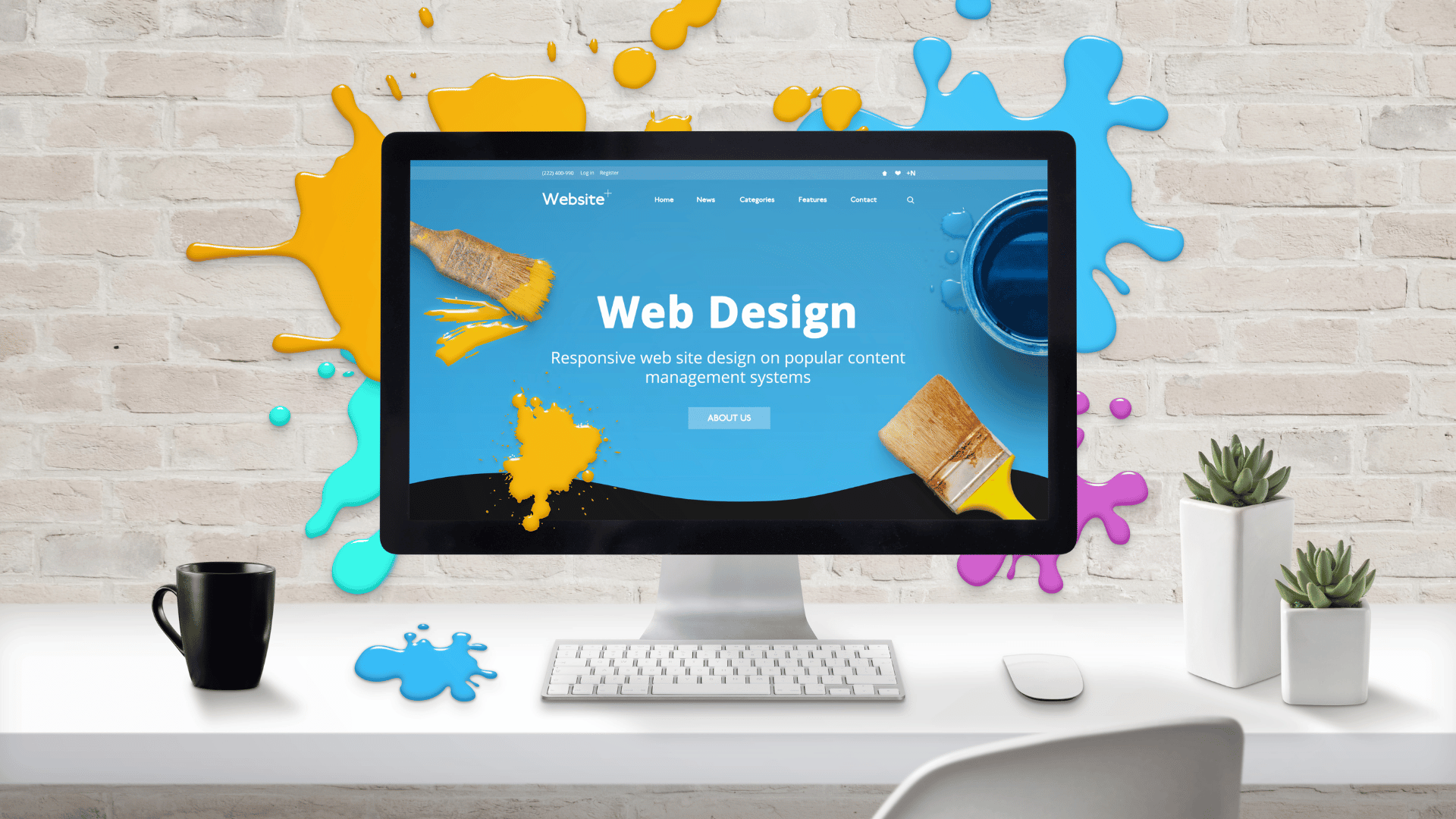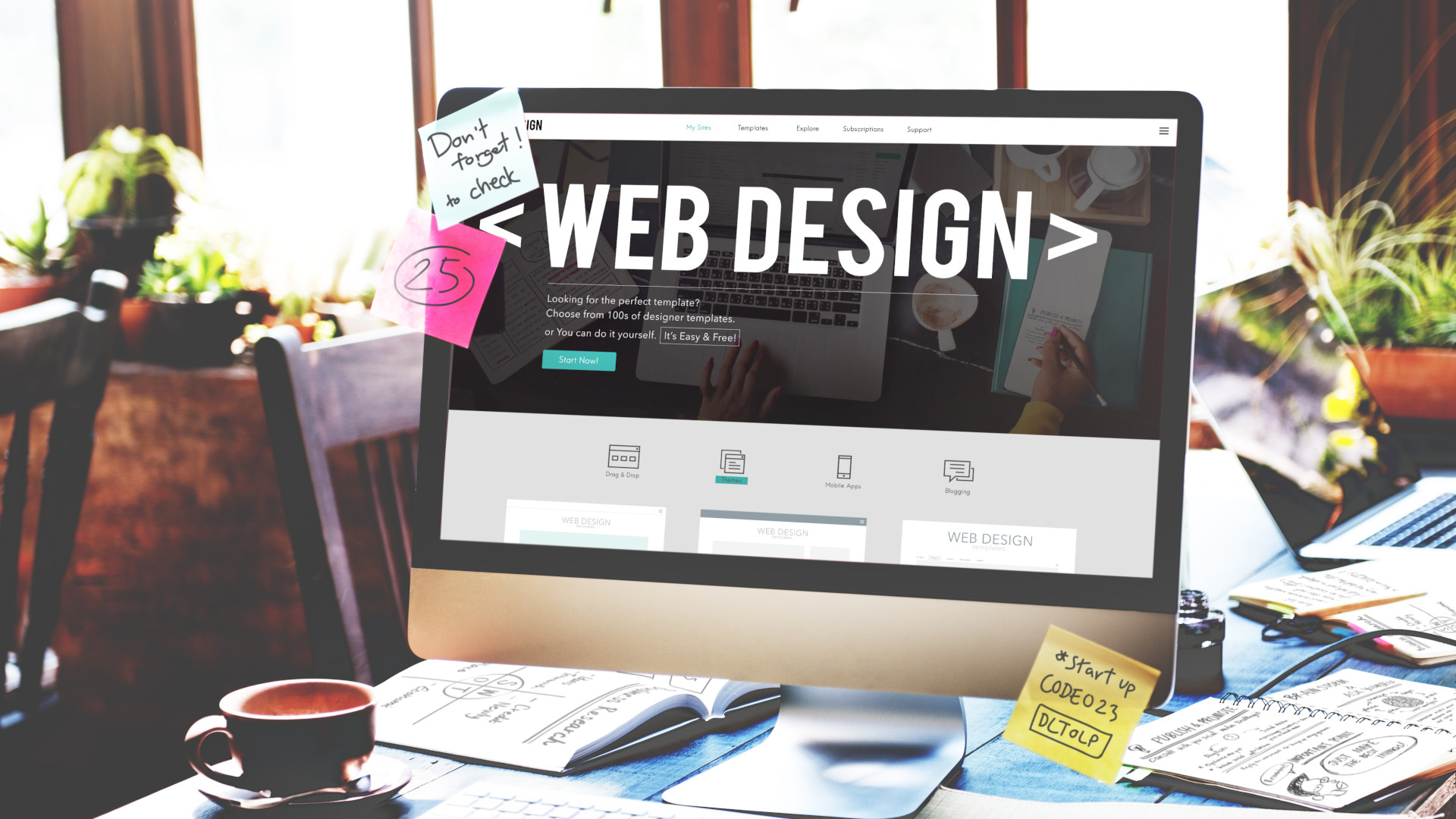Website Design London Ontario for Fast, Secure, and Expandable Sites
Website Design London Ontario for Fast, Secure, and Expandable Sites
Blog Article
How to Successfully Combine Aesthetic Appeals and Capability in Internet Style
When designing a web site, you need to strike a balance between appearances and performance. It's not almost looking excellent; your design ought to additionally serve an objective and guide customers successfully. By concentrating on simplicity and user-friendly navigation, you can develop an appealing experience. However what aspects absolutely enhance usability while maintaining aesthetic appeal? Allow's check out the key concepts that can result in an unified blend of charm and feature.
Comprehending the Significance of Aesthetic Appeals and Capability
When you create a site, comprehending the balance in between visual appeals and capability is important for producing an effective individual experience. An aesthetically enticing site grabs interest, yet it's the performance that maintains individuals involved. Visitors will quickly lose interest and leave.Consider your target audience and what draws them in if your site looks wonderful but is hard to browse. You want to produce a style that reflects your brand name while making certain ease of use. Streamlined designs, intuitive navigation, and clear phone call to activity can improve both aesthetic appeals and capability.

Principles of Effective Website Design
To create a reliable internet design, you require to follow several vital concepts that enhance both user experience and aesthetic charm. Initially, focus on simpleness; a tidy layout helps users navigate conveniently. Use a regular color pattern and typography to keep comprehensibility across your site. This promotes experience and trust.Next, ensure your design is responsive. Individuals gain access to internet sites on numerous tools, so your style needs to adapt flawlessly. Focus on visual hierarchy; highlight vital components with positioning, shade, or dimension to assist customers' focus.Finally, include sufficient white space. It prevents mess and makes content more digestible. Keep in mind, efficient web layout balances visual appeals and capability, so every layout choice should offer a function. By adhering to these concepts, you'll create a website that's not just aesthetically appealing however also straightforward, inevitably keeping visitors engaged and motivating them to return.
Focusing On User Experience
When focusing on user experience, you'll intend to start by recognizing what your individuals absolutely need. Streamlining navigating layout can make a huge difference in exactly how conveniently they discover what they're trying to find. Boosting visual pecking order helps lead their interest to the most essential components on your site.
Comprehending User Needs
Comprehending individual needs is necessary for creating an appealing web experience that maintains site visitors coming back. To accomplish this, you should determine the objectives and preferences of your target market. Begin by carrying out customer research study, like meetings or studies, to gather understandings on what individuals value most. When interacting with comparable websites, pay attention to their discomfort points and difficulties. This info permits you to customize your layout, making certain capability aligns with customer expectations. In addition, think about developing user personalities that stand for different segments of your target market, aiding you imagine their demands throughout the design procedure. When you prioritize comprehending customer needs, you develop a web site that not just looks wonderful yet likewise delivers a seamless, satisfying experience that fosters loyalty.
Simplifying Navigating Style

Enhancing Aesthetic Pecking Order
A solid visual pecking order is necessary in directing customers via your website and ensuring they engage with essential web content. To achieve this, use shade, size, and spacing strategically. Make essential aspects like headings larger and bolder than body text, attracting focus promptly. Make use of contrasting shades to highlight calls to activity, motivating clicks. In addition, employ sufficient white room to separate areas, making material digestible and inviting.Consider the circulation of info; prepare aspects practically, leading users' eyes from one point to the following. Use visual hints, like lines or arrows, to guide attention. By focusing on visual hierarchy, you enhance user experience and increase the possibility of conversions, guaranteeing your internet site is both cosmetically pleasing and functionally reliable.
Color Theory and Its Effect On Functionality
While selecting the ideal colors for your website might look like a small detail, it substantially influences functionality and customer experience. Color affects how customers view details and can hinder or enhance navigation. For example, contrasting colors can help essential aspects stand apart, making it simpler for site visitors to discover what they need.Additionally, think about the psychology of colors: blue frequently inspires depend on, while red produces necessity. Understanding your target audience can guide your shade selections, assuring they reverberate well.Moreover, constant color design aid build brand identification, making your internet site a lot more memorable. Be mindful-- too several colors can bewilder users. Adhere to a restricted palette that complements your web content and keeps clarity.Incorporating access is additionally important; confirm your shade mixes are pleasant for those with aesthetic disabilities. By thoughtfully applying color theory, you'll enhance use and produce an extra interesting individual experience.
Typography: Balancing Style and Readability
Shade selections established the phase for your website, but typography plays a just as crucial duty in enhancing individual experience. You want your text to communicate plainly while additionally reflecting your brand name's personality. Begin by choosing font styles that are not only appealing but likewise understandable. Sans-serif font styles usually function well for electronic screens, as they're less complicated to read at numerous sizes.Maintain a power structure by making use of various font dimensions and weights; this guides customers through your content easily. Take into consideration line spacing and letter spacing; as well tight can discourage readers, while too loose can interrupt the flow. Limitation your font style choices to 2 or 3 to keep the style cohesive.Finally, always test your typography across various gadgets and internet browsers. What looks great on one screen might not on another. Balancing style with readability guarantees that your message reverberates, keeping your audience educated and involved.
Responsive Design: Making Appearances Work on All Instruments
To assure your web site looks wonderful on any type of gadget, you'll need to accept receptive style concepts. This approach assurances your site adapts to numerous screen sizes, providing a perfect user experience. Start by making use of liquid grids and flexible photos that scale effortlessly. Rather than repaired measurements, select percents and family member systems, permitting your format to readjust dynamically.Next, carry out media inquiries in your CSS. These let you apply different styles based on tool characteristics, like display size. This way, you can maintain aesthetic allure while assuring functionality.Don' t fail to remember concerning touch targets; make specific buttons and links are easy to touch on smaller screens. Prioritize necessary content, so customers can conveniently browse your site no matter their device. By concentrating on these components, you'll produce an interesting, visually appealing experience that satisfies the needs of all individuals, whether they're on a tablet computer, desktop, or smartphone .
Conducting Functionality Testing for Constant Renovation
To enhance your website design, you require to set clear functionality goals that straighten with individual demands. By carrying out customer examinations, you can gather beneficial responses on just how genuine people connect with your site. Analyzing these results will assist you make notified enhancements and create a more reliable individual experience.
Specifying Functionality Goals
While appearances can draw customers in, defining functionality objectives is essential for guaranteeing their experience stays smooth and gratifying. Beginning by recognizing what you desire customers to accomplish on your site (website design london Ontario). Consider their tasks, requirements, and behaviors. Are they seeking info, making a purchase, or registering for an e-newsletter? Establish clear criteria to gauge success, like job conclusion prices or time on job. Prioritize user-friendly navigating, available material, and receptive design to improve functionality. Frequently take another look at these objectives as customer assumptions evolve. By defining functionality objectives, you produce a framework for assessing and boosting your website's efficiency. This emphasis on usability not just increases customer contentment however likewise strengthens the overall efficiency of your design
Conducting User Tests
Carrying out user tests is vital for fine-tuning your web site and ensuring it fulfills your target market's needs. Start by identifying your target users and producing a test plan that outlines your goals. Make use of a mix of qualitative and measurable methods, such as surveys, interviews, and task-based observations, to collect complete feedback. Welcome participants to browse your website while you observe their interactions and keep in mind any type of troubles they run into. Encourage open dialogue to record their thoughts and feelings concerning the style and functionality. Keep sessions short and focused, guaranteeing you cover essential locations without overwhelming users. Make sure to record all findings, as this information will be indispensable for making educated design choices that improve both visual appeals and usability.
Examining Test Outcomes
Exactly how can you efficiently examine the outcomes of your use tests to drive continual enhancement? Start by classifying responses right into common motifs. Look for patterns in individual habits that highlight pain points or areas for enhancement. Usage quantitative data, like job conclusion rates and time on job, to gauge use objectively. Don't forget to consider qualitative insights from website customer remarks; they usually reveal underlying issues that numbers can't reveal. Focus on one of the most impactful searchings for and develop actionable items for your design group. Bear in mind, it's concerning iterating-- implement changes, after that test once again. This cycle of screening, analyzing, and refining aids you equilibrium aesthetics and functionality, guaranteeing your web site meets individual requirements successfully while keeping aesthetic allure.
Regularly Asked Inquiries
How Do I Choose the Right Shade Scheme for My Web site?
To select the best shade scheme for your web site, consider your brand name's character, target audience, and emotional impact (website design london Ontario). Use shade psychology, produce harmony, and warranty readability. Examination mixes to see what reverberates best with visitors
What Tools Can Help With Website Design Visual Appeals and Performance?
You can make use of devices like Adobe XD, Figma, and Map out to boost your internet layout's looks and functionality. These systems supply intuitive interfaces, cooperation functions, and pre-made layouts to enhance your imaginative procedure and enhance your designs.
How Can I Incorporate Animations Without Jeopardizing Functionality?
To include animations without compromising performance, prioritize refined results that improve user experience. Use CSS animations for smoother interactions, guarantee quick lots times, and examination on different gadgets to maintain performance while including visual appeal.
What Are Typical Errors to Prevent in Website Design Looks?
When creating, avoid chaotic formats, inadequate shade choices, and irregular fonts. Do not forget mobile responsiveness, as it can alienate customers. Verify your design aligns with your brand, creating a smooth experience that engages site visitors efficiently.
How Usually Should I Update My Web site's Layout for Optimal Aesthetic Appeals?
You must update your website's design every 1-2 years to stay on par with trends and maintain suitable aesthetic appeals. Frequently renewing visuals helps engage site visitors and warranties your site stays user-friendly and appealing. When you design an internet site, comprehending the balance in between appearances and functionality is essential for developing a reliable user experience. To develop a reliable web design, you require to stick to a number of key concepts that boost both user experience and visual charm. Users accessibility sites on various gadgets, so your design needs to adjust flawlessly. When prioritizing user experience, you'll desire to start by recognizing what your individuals genuinely need. Beginning by performing individual study, like surveys or meetings, to gather insights on what users worth most.
Report this page